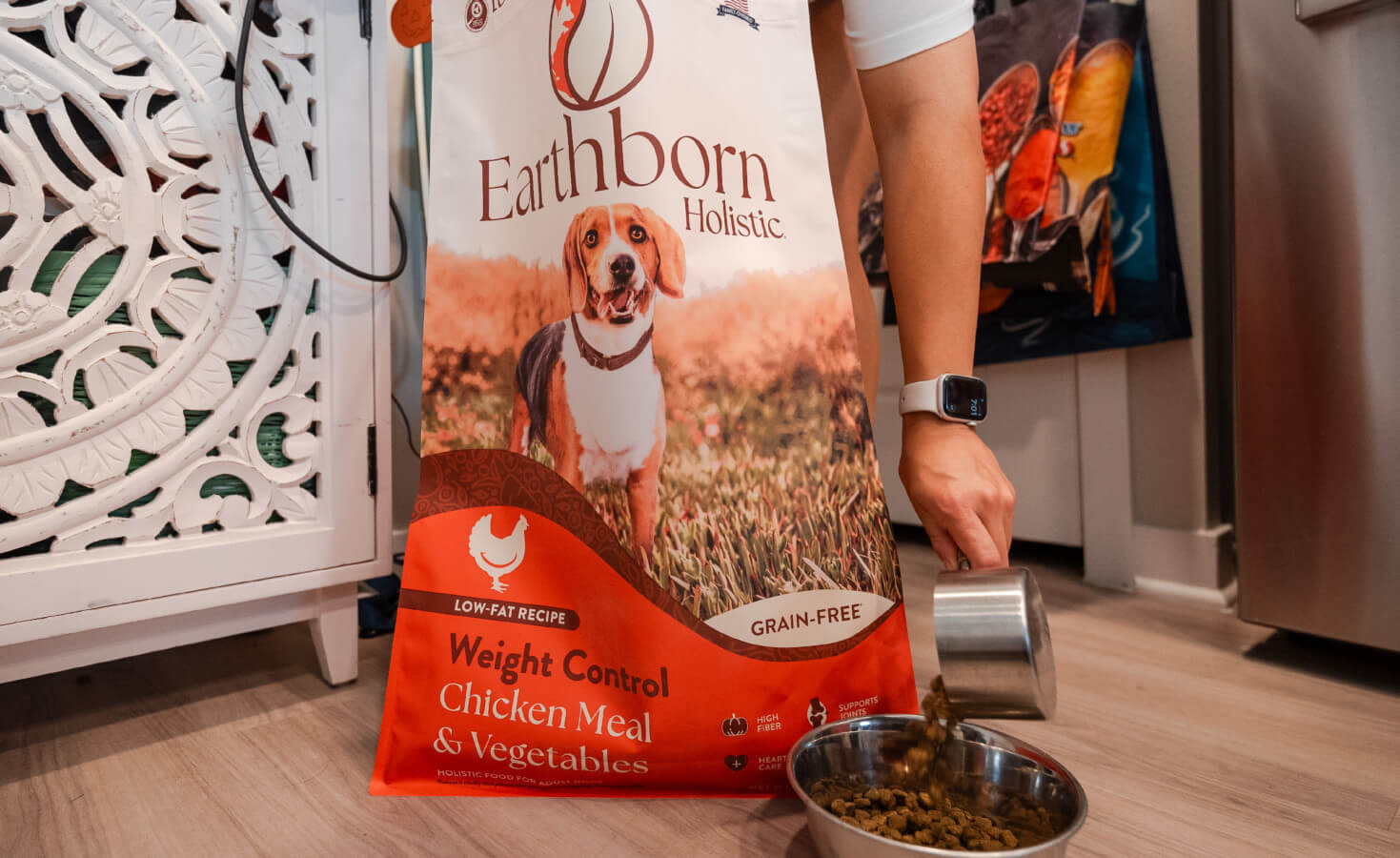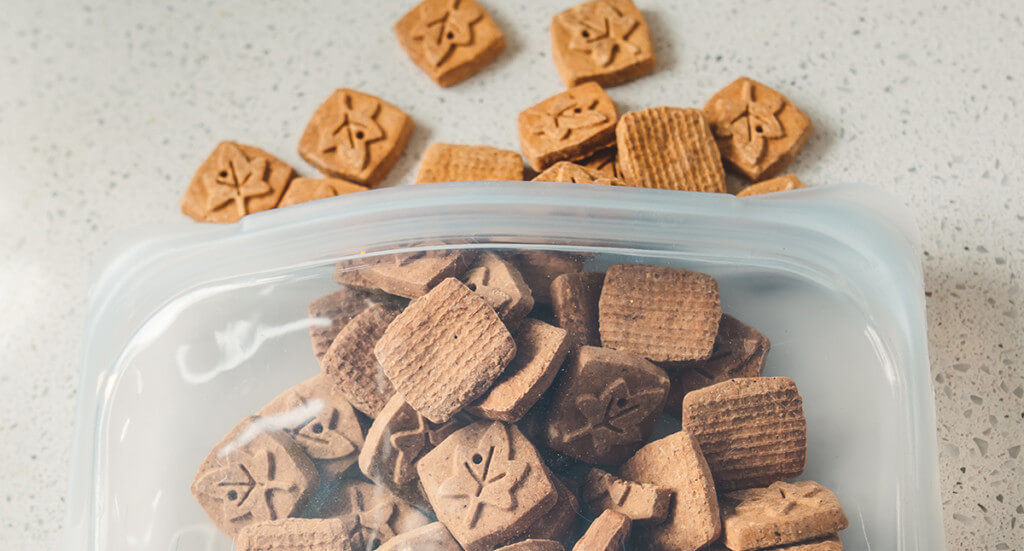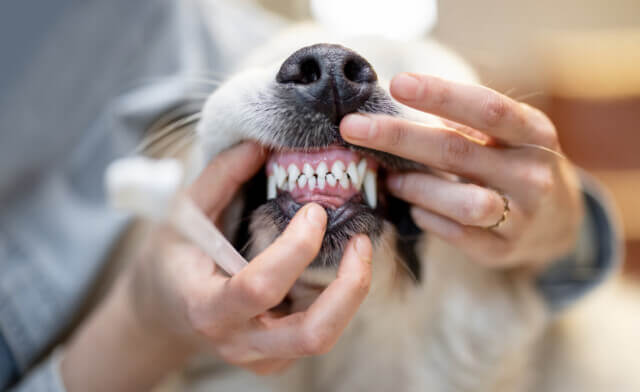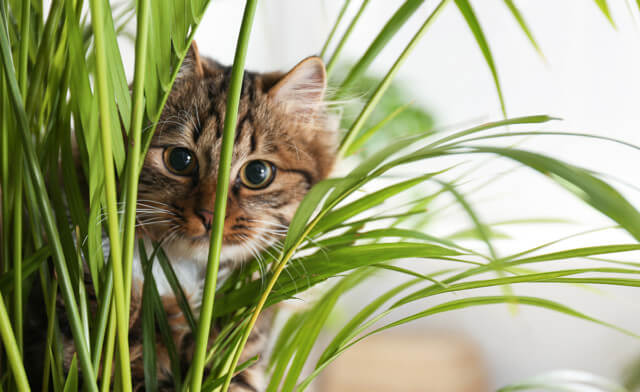Tips for Your Dog Food Storage Container
A clean, well-organized dog food storage solution is essential for maintaining your pup’s health and happiness. Choosing the right storage container and keeping it in good condition can help extend the shelf life of your dog’s food, prevent spoilage, and ensure that it stays fresh and free from contaminants.
In this article, we’ll share our top tips for finding the perfect dog food storage container and maintaining it. We’ll also explore different types of containers, storage techniques, and helpful ideas for keeping your dog’s food fresh and easily accessible.

Keep it in a Cool Place
Before shopping for the best dog food storage containers, you’ll need to identify the ideal location in your house to store them. Proper dog food storage begins with selecting a cool, dry place away from direct sunlight, heat sources, and moisture. These environmental factors can lead to the degradation of the food, causing it to spoil faster and potentially become harmful to your pet.
Long-term dog food storage can become a challenge, especially when storing dog food in a garage or other non-climate-controlled spaces. So, make sure to choose the best container for dog food and keep it in a location where the temperature and humidity remain stable – ideally somewhere in the house. In addition, avoid placing the container near appliances that generate heat, like ovens or refrigerators.
When considering where to store dog food in the house, think about places that are easily accessible but separate from areas where you store human food. Basements, pantries, or dedicated pet food storage closets are all excellent options. Make sure the area you choose remains consistently cool, dry, and protected from pests like rodents or insects.
Clean it Regularly
To ensure your pet’s food stays fresh and uncontaminated, it’s important to regularly clean the storage container. It’s also vital to look for a smell-proof dog food container that’s made of non-porous material to minimize odor buildup. Over time, residual oils and food particles can accumulate within the container, potentially causing bacteria and mold growth. Regular cleaning can help prevent these issues and maintain a healthier environment for your pet’s food.
To clean your plastic dog food storage container, empty any remaining food and wash it with warm, soapy water. Thoroughly rinse the container and allow it to dry completely before refilling it with fresh food. Whether you’re storing pet food in a plastic container or one made from another material, be sure to inspect it regularly for signs of wear or damage. Even small cracks or scratches can become breeding grounds for bacteria, so replace the container if you notice any issues.
Finally, don’t forget about the scoop or other utensils you use for serving the food. Wash them regularly, and consider having a dedicated scoop that’s only used for pet food to prevent cross-contamination.
Keep it Closed Tightly
A key factor in maintaining the freshness and quality of your dog’s food is ensuring that the storage container is closed tightly. The best airtight pet food container will have a secure lid that effectively seals out air, moisture, and pests. Look for containers with strong seals, such as gaskets or latches, to ensure the tightest closure possible.
When deciding how to store dog food long term, remember that exposure to air and moisture can cause the food to spoil or become rancid. A tight seal is crucial for preventing these problems. Additionally, a well-sealed container will help deter pests like rodents and insects from invading your pet’s food supply.
Consider the best container to store dog food in terms of its accessibility and ease of use. There are various ways to store dog food, including stackable containers, bins with wheels, or even storage cabinets with built-in bowls. No matter which type of container you choose, always make sure it closes securely to preserve the food’s freshness.
Properly storing dog food also involves regularly checking the container’s seal for damage or wear. A damaged seal can compromise the container’s airtightness, so replace it as needed. In addition, be cautious of storing dog food in a plastic container that’s not specifically designed for pet food storage, as it may not provide an adequate seal.
The best way to store dry dog food is to minimize its exposure to air and moisture. Each time you open the container to serve your pet’s meal, close it tightly to maintain the food’s freshness and protect it from contaminants.
Look Into Alternatives to Plastic
While plastic containers are a popular choice for dog food storage, there are other options to consider. Some pet owners prefer cool dog food containers made from different materials, such as metal or glass. These alternatives can offer a more environmentally friendly and aesthetically pleasing option for storing your dog’s food.
Pet food storage tins made of metal, for example, provide a stylish and functional alternative to plastic containers. They often come in various sizes and designs, making it easy to find one that matches your home’s decor. In addition to being more visually appealing, metal tins are generally more durable than plastic containers and can help keep the food cool and dry.
Another option to explore is pet food storage containers made from glass. Glass containers have the advantage of being non-porous, which means they won’t absorb odors or stains from the food. They also offer a clear view of the contents, making it easy to monitor the food level and determine when it’s time to replenish your supply.
For those with limited space or who prefer a more integrated storage solution, dog food pull-out cabinets, dog food storage cabinets with bowls, or pull-out dog food bins can provide a convenient and space-saving alternative. These storage options often blend seamlessly into your home’s design, making them an excellent choice for keeping your pet’s food hidden and organized.
Additionally, you can consider dog food storage drawers that can be incorporated into your kitchen cabinetry. These drawers provide a discreet and organized way to store dog food while keeping it easily accessible.
Seal Your Food Bags
One often overlooked aspect of dog food storage is the importance of properly sealing the food bags. This is essential to maintain the freshness of the food and prevent contamination from external factors such as pests and moisture. In this section, we’ll explore various techniques and products for keeping your dog food bags sealed and fresh.
Dog food bag storage is the first line of defense in keeping your pet’s food fresh and free from contamination. Start by carefully rolling down the top of the bag to remove excess air, then use a clip or other sealing mechanism to close it securely. This will help to maintain the food’s freshness and prevent exposure to air and moisture, which can lead to spoilage. Alternatively, you can use stasher bags, which are resealable silicone bags designed specifically for food storage.

For added protection, consider investing in a dog-proof food storage container. This will keep your pet’s food safe from curious noses and paws while ensuring the contents stay fresh. These containers come in a variety of shapes, sizes, and colors, making it easy to find one that meets your needs.
In addition to containers, you can also purchase dog food storage cans to store your pet’s food. These cans provide a convenient way to store wet or dry food and help preserve its freshness. Look for containers that feature tight-fitting lids and easy-to-grip handles for maximum convenience.
Another option to explore is dry food storage containers. These containers are designed specifically for storing dry pet food and often come with an airtight seal to maintain freshness. They come in various sizes and materials, so choose one that meets your storage needs and complements your home’s decor.
Maintaining freshness is key to your dog’s health and happiness, so take the time to explore various ideas for dog food storage and find a solution that works best for you and your pet. With a few simple steps, you can ensure your dog’s food stays safe and fresh for their enjoyment.
Use a Little at a Time
The way you use and manage your dog food can significantly impact its freshness and quality. In this section, we’ll discuss the importance of using a little dog food at a time and rotating your supply to ensure the food stays fresh and maintains its nutritional value.
One essential tip to prolong the freshness of your dog food is to use a smaller storage container for dog food. This allows you to keep a smaller amount of kibble out and easily accessible, while the rest of the food stays safely sealed in its original packaging or a larger container. This way, you can maintain a constant supply of fresh food without exposing the entire batch to air, moisture, and contaminants.
A dog food storage dispenser can be a convenient and practical way to store and serve your dog’s food. These dispensers typically have a large storage compartment for kibble and a smaller serving compartment that can be easily refilled as needed. Some dispensers are even designed to measure out specific serving sizes, making it easy to ensure your dog gets the proper amount of food each mealtime.
Investing in a good kibble container or dry pet food container can also be helpful in managing your dog’s food supply. Look for containers with an airtight seal, as this will help to maintain freshness and prevent the kibble from going stale. Additionally, some kibble containers come with a built-in scoop, which makes portioning out your dog’s meals quick and easy.
Storage bins for dog food are another option to consider, especially if you have multiple pets or purchase food in bulk. These bins typically have a larger capacity and are designed for long-term storage. Make sure to rotate the food inside the bin regularly, so you always feed your dog the freshest kibble possible.
Remember, using a little dog food at a time and rotating your supply is essential for maintaining freshness and nutritional value. Experiment with different storage containers and dispensers to find the solution that works best for you and your pets. In the next section, we’ll discuss the importance of checking the dimensions of your storage containers to ensure they fit in your designated storage area.
Check the Dimensions
When selecting a dog food storage container, it’s crucial to consider the dimensions and ensure it will fit comfortably in your designated storage area. First, measure the space where you plan to store your food containers for dogs. This will give you an idea of the dimensions you’ll need for the storage container and help you avoid buying a container that’s too large or small for the available space.
Dog food holders come in various shapes and sizes, so it’s essential to find one that fits your available storage area while also accommodating the amount of food you need to store. A dog food storage bucket with a tight-fitting lid can be an excellent solution for those with limited storage space, as these containers can often be stacked or tucked away in a corner.
If you have more room, you might consider a screw-top dog food container. These containers typically come with a large capacity and are designed for long-term storage. The screw-top design also makes it easy to open and close the container while keeping out pests and maintaining an airtight seal.
A sealed dog food storage container is another option for those looking to maintain freshness and protect their pet’s food from pests and contaminants. These containers often have a locking lid or a rubber gasket to create an airtight seal.
Containers for dog food storage come in various materials, so it’s essential to consider the benefits and drawbacks of each option. Plastic containers are often lightweight, affordable, and easy to clean but may be more susceptible to scratches, cracks, or warping. Metal containers, on the other hand, can be more durable and stylish but may also be more expensive and heavier.
In conclusion, checking the dimensions of your dog food storage container is essential for finding the perfect solution for your storage needs and available space. Whether you’re looking for a stackable bucket, a screw-top container, or a sealed container, there are many options to choose from that cater to various storage needs and spaces. By selecting the right container and ensuring it fits in your designated storage area, you can help maintain your dog’s food freshness and quality, ensuring their health and happiness.
The Bottom Line
A well-maintained and organized dog food storage system is crucial for ensuring your pet’s health and happiness. By selecting the right container, keeping it clean, and following proper storage techniques, you can extend the shelf life of your dog’s food and maintain its freshness.
Additionally, by exploring alternative storage solutions and implementing effective strategies such as sealing food bags and using smaller containers for daily use, you can further enhance your pet’s food storage system. By following these guidelines, you can provide your dog with a consistently high-quality diet and ensure their overall wellbeing.




